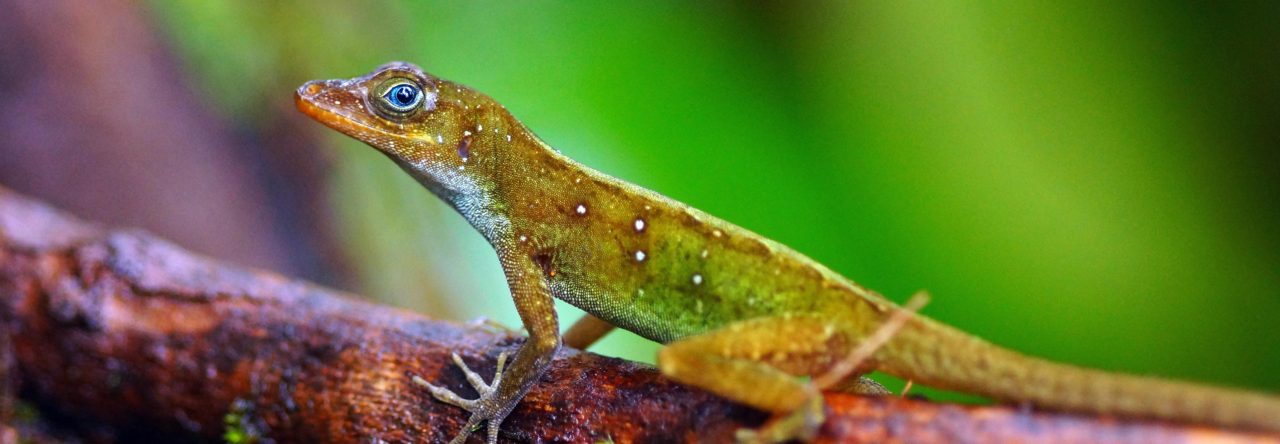
There are lofty goals, and then there is the Encyclopedia of Life. In case you haven’t heard of it yet, the Encyclopedia of Life is an international initiative to provide free access to detailed information about all the world’s species. The Encyclopedia of Life, or EOL, has 180 content partners, information from nearly 1,000 collections, over 750,000 species pages and more than 600,000 species images. To date EOL has drawn over 5 million viewers from across the globe.
Two years ago I got to participate in this project by helping to write pages for Anolis species as part of a class project for Harvard’s Herpetology course. In all the unbridled enthusiasm and the sense of endless time that comes with being a young graduate student, I decided that doing a single species page would not be nearly as exciting as describing an entire clade of anoles. Because I knew I would be working extensively with the cybotoids, a clade composed of the trunk-ground anoles from Hispaniola that is so near and dear to my heart, I decided to write pages for the whole group. When I embarked on this journey my list included A. armouri, A. cybotes, A. haetianus, A. longitibialis, A. marcanoi, A. strahmi, A. shrevei, and A. whitemani.










 Although devoted to all things Anolis, Anole Annals strives to keep its readers updated on relevant findings concerning other lizards. In that vein, we’ve just learned of a newly completed thesis on lacertid lizards on European islands by Anna Runemark at Lunds University, under the supervision of Erik Svensson. Here’s the English summary of her thesis, from
Although devoted to all things Anolis, Anole Annals strives to keep its readers updated on relevant findings concerning other lizards. In that vein, we’ve just learned of a newly completed thesis on lacertid lizards on European islands by Anna Runemark at Lunds University, under the supervision of Erik Svensson. Here’s the English summary of her thesis, from 